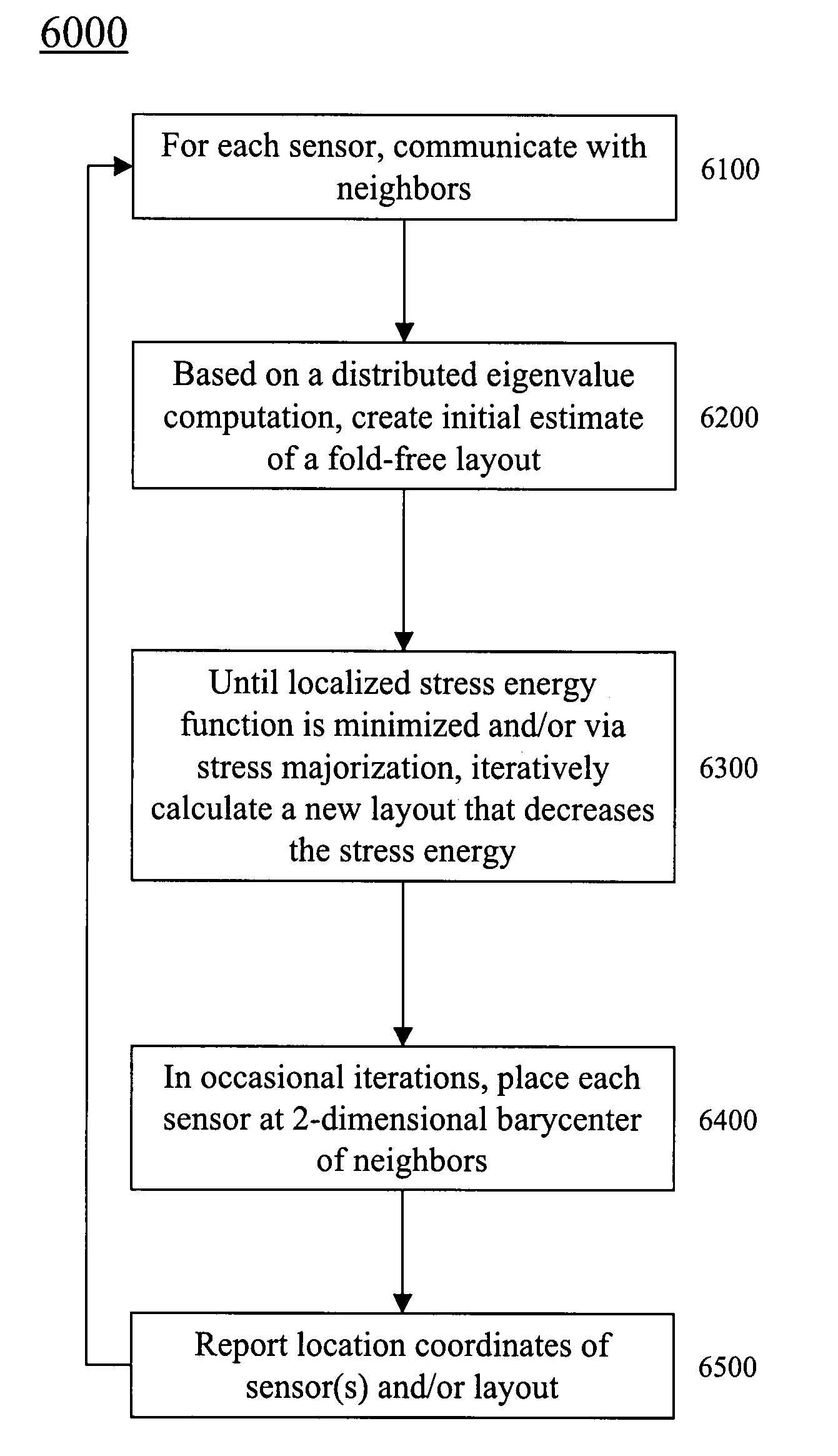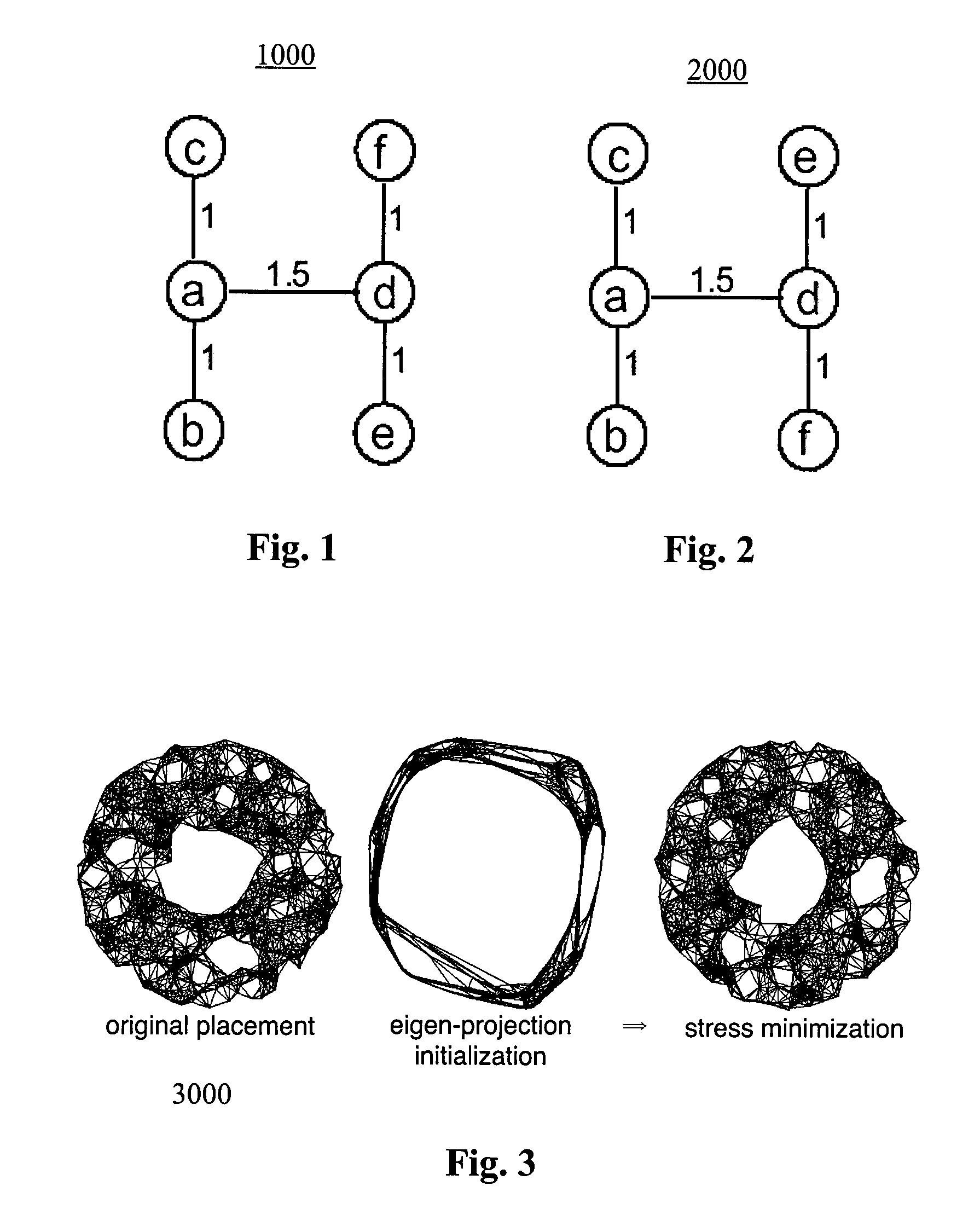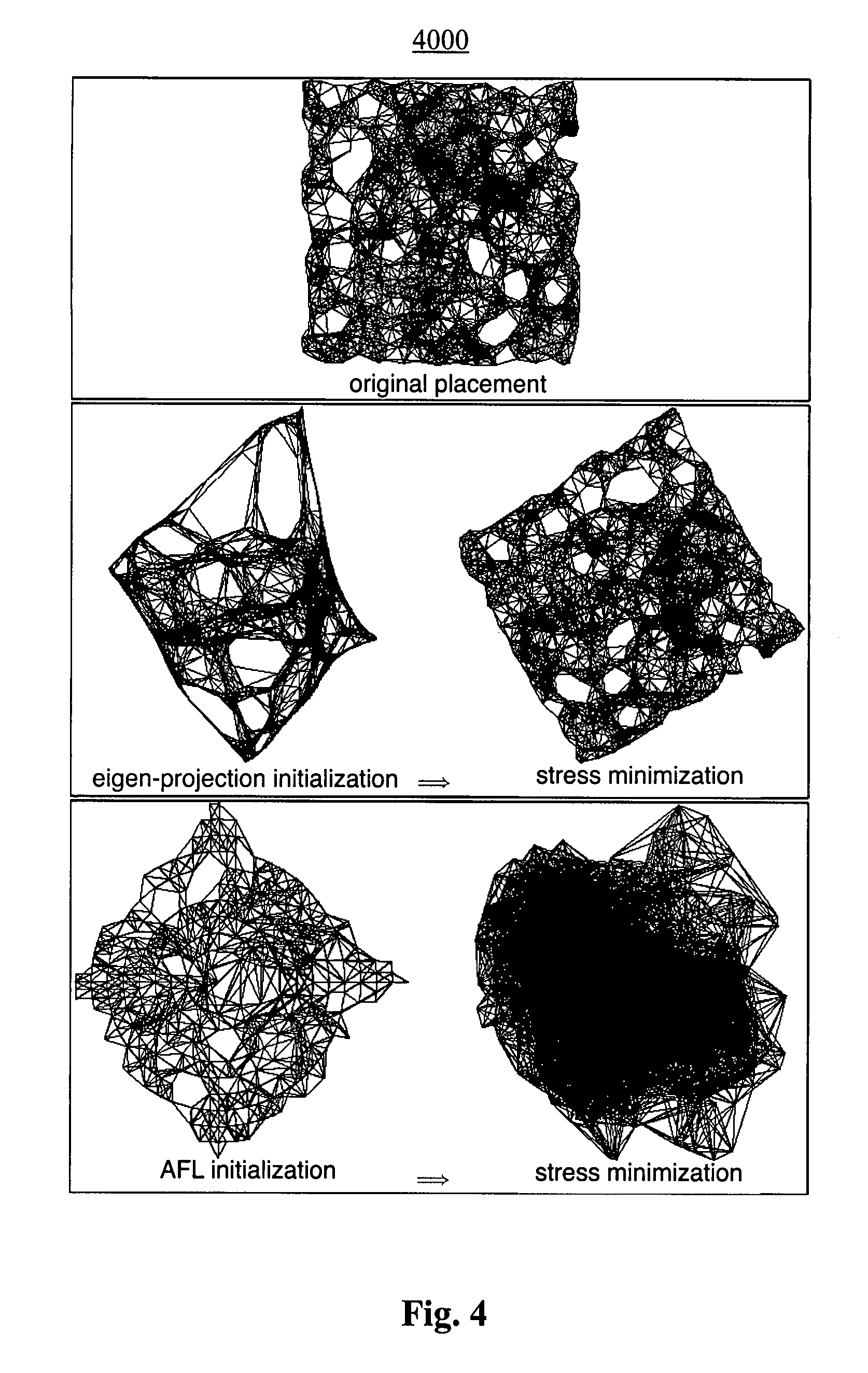Distributed graph layout for sensor node networks
a node network and distributed graph technology, applied in the direction of distance measurement, navigation instruments, instruments, etc., can solve the problems of algorithm accumulation of errors, algorithm cannot escape local minima, and no polynomial time algorithm is known to compute the layou
- Summary
- Abstract
- Description
- Claims
- Application Information
AI Technical Summary
Benefits of technology
Problems solved by technology
Method used
Image
Examples
Embodiment Construction
[0010]Sensor node network applications can benefit from the sensor nodes knowing their physical locations in some global coordinate system. This can be achieved by equipping each sensor node with a location measurement device, such as GPS. However, low-end systems or indoor systems, which typically cannot use GPS, can typically locate themselves based only on crude information available locally, such as inter-sensor node distances. Herein is shown how a collection of sensor nodes, capable only of measuring distances to neighbors, can compute their locations in a purely distributed manner, i.e., where each sensor node communicates only with its neighbors. This can be viewed as a distributed graph drawing algorithm. We experimentally show that our algorithm consistently produces good results under a variety of simulated real-world conditions.
1—INTRODUCTION
[0011]Sensor node networks can be viewed as a collection of (usually miniature) devices, each with limited computing and (typically...
PUM
 Login to View More
Login to View More Abstract
Description
Claims
Application Information
 Login to View More
Login to View More - R&D
- Intellectual Property
- Life Sciences
- Materials
- Tech Scout
- Unparalleled Data Quality
- Higher Quality Content
- 60% Fewer Hallucinations
Browse by: Latest US Patents, China's latest patents, Technical Efficacy Thesaurus, Application Domain, Technology Topic, Popular Technical Reports.
© 2025 PatSnap. All rights reserved.Legal|Privacy policy|Modern Slavery Act Transparency Statement|Sitemap|About US| Contact US: help@patsnap.com



